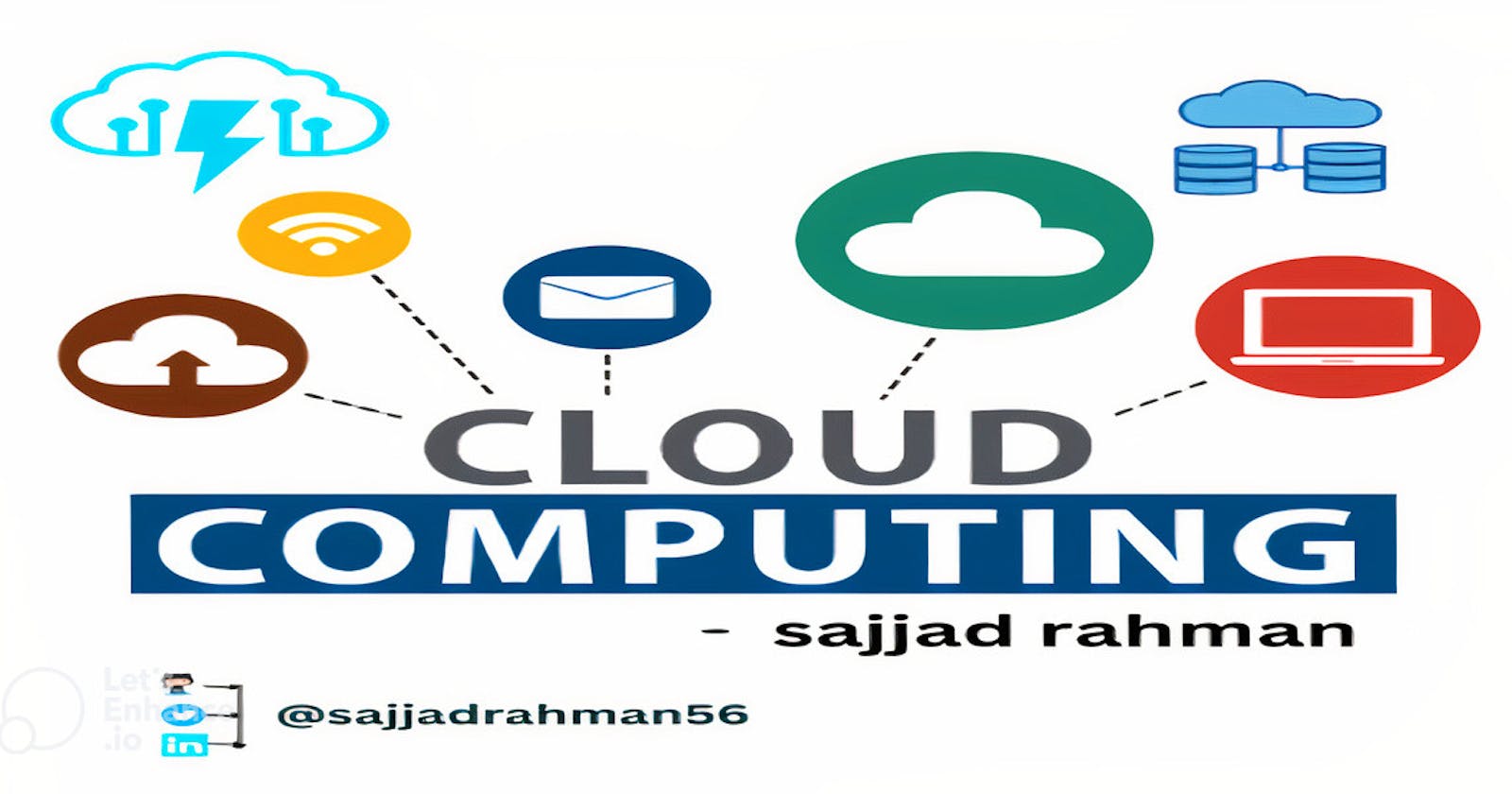Before the advent of cloud computing, data centers were built with hardware, memory, RAM, and various other components. But, after
What is cloud computing?
The term "cloud" is simply a metaphor for the internet. When we refer to the cloud, we are essentially referring to the internet itself. Cloud computing involves the delivery of computing services over the Internet, offering benefits such as faster innovation, flexible resources, and economies of scale.
Computing services encompass a wide range of functionalities, including operating systems, RAM, and other types of functionality that can be performed individually on our local computers.
In simple terms, cloud computing means storing and accessing data and programs over the internet instead of relying on our local computer's hard drive.
Cloud Service Providers
Cloud service providers are companies that offer a range of cloud computing services and resources. They provide infrastructure, computing power, storage, networking, applications, and analytics over the Internet. Amazon Web Services (AWS), Microsoft Azure, Google Cloud Platform (GCP), IBM Cloud, and Oracle Cloud Infrastructure (OCI) are well-known cloud service providers. Users can access these services on a pay-as-you-go or subscription basis. These providers have data centers, network infrastructure, and tools to support businesses and individuals in utilizing cloud computing for their computing needs.
What they can do?
Cloud service providers, such as Azure and AWS, offer a variety of services, including compute power (such as Windows and Linux virtual machines), storage (such as object storage), applications (such as NoSQL or SQL database applications), networking (such as setting up virtual networks for your virtual machines), and analytics (such as visualizing telemetry and performance data).
Cloud Deployment models
When it comes to deployment models in cloud computing, there are three primary categories:
Private Cloud*:* Organizations create their cloud environment within their data centers and are responsible for operating the services they provide. Private clouds are not accessible to users outside the organization.
Public Cloud: Owned by cloud services or hosting providers, public clouds offer resources and services to multiple organizations and users. They are accessed through secure network connections.
Hybrid Cloud: This model combines both public and private clouds, allowing applications to run in the most suitable location based on specific requirements.
The key differences between public, private, and hybrid clouds lie in factors such as capital expenditures, control over resources and security, and flexibility in determining where to run applications.
In the world of cloud computing, everything is categorized as a service. This can include infrastructure, software, and various resources. Service providers share infrastructure with multiple organizations while ensuring security and isolation between different entities.
Cloud computing has revolutionized the way businesses operate, providing scalability, flexibility, and cost-effectiveness. It continues to be a driving force in the digital transformation of organizations worldwide.
Overview
Cloud computing is the delivery of computing services over the internet, offering benefits such as flexibility, scalability, and cost-effectiveness. Cloud service providers like AWS and Azure offer a range of services, including computing power, storage, applications, networking, and analytics. There are three deployment models: private cloud, public cloud, and hybrid cloud. Cloud computing has transformed businesses by providing a scalable and efficient infrastructure, enabling digital transformation worldwide.
Cloud computing is the delivery of computing services over the internet, providing scalability, flexibility, and cost-effectiveness. It has three deployment models and has revolutionized the way businesses operate, enabling digital transformation worldwide.
Connect with me

